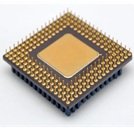In this course, we will study What is Parallel Processing and Vector Processing, the advantages, and disadvantages of parallel processing and vector processing, the classes of parallel computers, vector processing, and the difference between the two.
Post Credit: Difference Between Parallel Processing and Vector Processing
What is Parallel Processing?
In parallel processing instead of processing the instructions sequentially, we process them parallelly. This process enables the system to perform concurrent data processing and hence helping it to achieve faster performance.
- The large problems are divided into small and are solved simultaneously.
- In the parallel processing during the execution of one instruction in the ALU of the CPU, the next instruction can be read by the memory.
- By parallel processing, the throughput of the system is increased. The throughput is the amount of processing that can be achieved during a given time interval.
- In parallel processing, there are multiple processors connected to a single device.
- The cost is less than sequential processing.
- We increase the registers and the functional units.
Also learn the Assembly Language
Types of Parallel Processing
Bit Level
It is based on increasing the word size of the processor. By increasing the word size the number of instructions to be executed by the processor decreases.
Instruction Level Parallelism
It is a measure of how many instructions can be executed simultaneously.
Data Parallelism
It focuses on distributing the data among different nodes, which operates on data in parallel. It can be applied to arrays and matrices.
Task Parallelism
It focuses on distributing the tasks to different processors.
What are the Advantages of Parallel Processing?
- Parallel processing makes execution fast.
- Much more suited for modeling, simulating and understanding complex problems.
- Parallel processing saves cost.
- It has a large storage and can do quick computations.
What are the Disadvantages of Parallel Processing?
- Programming is quite difficult.
- Sometimes the results may not be good.
- There is a need for better cooling technologies in the case of computers like a cluster.
- Power consumption is high in computers like multi-core.
- The solutions given are a little harder to implement.
What are the Classes of Parallel Computers?
Multicore Computing
The multi-core processor is a processor having many processors or processing units. The multi-core processor can issue multiple instructions per clock cycle from multiple instruction streams.
Symmetric Multiprocessing
Asymmetric multiprocessor is a computer system consisting of multiple identical processors. These processors share the memory and are connected via a bus.
Distributed Computing
A distributed memory multiprocessor is a distributed memory computer system in which the processing elements are connected via a network.
Cluster Computing
It is a group of loosely coupled computers that work together closely. The machines connected do not have symmetry.
Massively Parallel Computing
It is a single computer consisting of various network processors. They have some properties the same as the cluster computers.
Grid Computing
It is the most distributed form of parallel computing. It uses the computer communicating over the internet to work on a given problem.
What is Vector Processing?
- These perform the arithmetic operations on a large scale array.
- Vector processing operates parallelly on all the elements of the array.
- It avoids the overhead of processing loops and fastens the computation.
- Vector processing is possible only if the operations performed in parallel are independent of one another.
- Vector registers are used to store the data for vector instructions.
- Every element of the vector operand should be a singular quantity.
- Vector processing is much more efficient than parallel processing.
What are the advantages of Vector Processing?
- The code density of the instructions can be improved.
- The data can be handled by the hardware in a better way.
- Instruction bandwidth is decreased.
- The accurate graphic location of data is maintained.
- Efficient encoding of data can be done
What are the disadvantages of Vector Processing?
- Explicit storing of the location of vertex has to be done.
- Continuous data is not efficiently represented.
- Any modifications of vector data lead to a change in topology.
Also learn the What is DMA
Difference Between Parallel Processing and Vector Processing
| PARALLEL PROCESSING | VECTOR PROCESSING |
|---|---|
| It is simultaneous processing of the same tasks on two or more processors | It is the processing of mathematical operations on a large scale array |
| The resources can be included in a single computer consisting of multiple processors | The resources can be included in a single computer consisting of multiple registers |
| In this, there are various processors that are working | In this, there is only one processor that is working |


